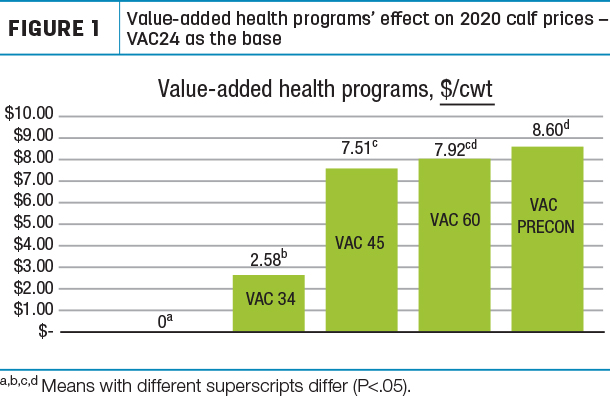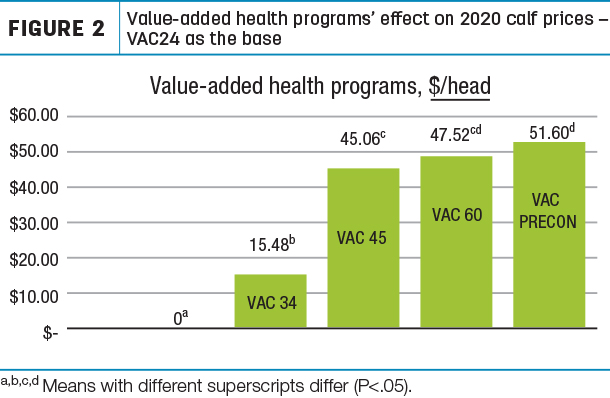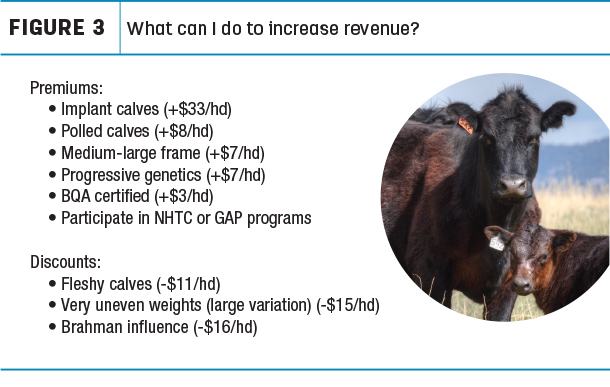Getting the highest value for your calves isn’t just about the things you’re doing right. It’s also based upon what you’re not trying at all. Dollars are being left on the table when cow-calf producers do not implement management steps that push heavier and healthier calves, said John Hutcheson, director of cattle technical services for Merck, before an audience at the Texas and Southwestern Cattle Raisers Association in 2021.
It doesn’t make sense to shortchange your balance sheet, especially when the steps are easy to adopt.
“There are management and health programs that have consistently increased calf value,” Hutcheson said. “There’s still a large majority of our producers that, either they don’t do that or they don’t know that they can do that. I don’t know whatever the reason, or what the resistance is on why they all aren’t doing some of these management and health programs, because they have increased value of the calves that actually sell.”
Investing time and initial expense pays off on a price-per-pound basis. Using Superior Livestock Auction data compiled and analyzed by Merck Animal Health and Kansas State University, Hutcheson said the payoff comes with some “extremely large amounts of money” on calf lots.
Opportunity 1: When to sell
Hutcheson displayed 2020 sales data from the national calf database, with a sample of 6,848 lots and 805,079 head. The mean weight was 577 pounds, and mean lot size was 118 head. The majority of calves were sold from October to December when prices are traditionally lower due to supply. But higher price averages could be seen in February and March. “So you have the opportunity to change the month you market calves to try to keep earning a little more.”
Opportunity 2: Implants
The bulk of calves in the data (57%) were not implanted and not in a program that bans implants, leading Hutcheson to explain the lost value from additional pounds is a huge omission by producers not using them.
“This is what frustrates me because it’s a technology that can be used, that is not being used.”
Many avoid implants if they’re targeting non-hormone-treated cattle (NHTC) programs or third-party certification services such as Global Animal Partnership (GAP). But Hutcheson said just doing those programs without any certainty of who is going to buy the calves does have risks.
In the Superior data, by not implanting, producers lost $5.79 per hundredweight (cwt) or $33 per head.
“If you’re not in a program that bans implants, you need to be putting an implant on those calves and weighing them. Two to 3 months [old] or when they’re going to get off your own place. Because you’re going to see on average 23 pounds [gained].”
Opportunity 3: Gender, horns, frame, flesh
It’s not uncommon to see how steers bring in higher prices than mixed lots, which bring in more than heifers. Using sexed semen is an option, Hutcheson said, although that has a higher fixed cost. But the premium is consistent. In the Superior lots, steers saw $16.62-per- cwt premiums, and mixed saw $6.89 per cwt over base heifer price.
More manageable is keeping horns off calves. Polled or non-horned cattle averaged $1.37 per cwt or almost $8 a head in the Superior data.
Frame size also plays into a higher return when cattle tilt toward heavier size. Pounds still pay price, Hutcheson said, and larger frames have the advantage to the tune of $7 a head. Cattle remain large with finishing sizes above 1,400 pounds. “We’ve got to have a frame size to get those weights and still be in good shape.”
On the flesh side, those with medium-heavy flesh saw discounts of $11 per head. So managing with implants – where cattle are heavy but leaner – will play to your advantage. “Work with your nutrition programs. We’ve got to control flesh, right? Keep in mind that’s a place to return value for your calves’ frame.”
Opportunity 4: Reduce weight variation
As breeding seasons get spread out over time, calving seasons follow suit, which leads to inconsistent weights. Calves born earlier weigh more; those born later weigh less. In the Superior data, lots with very uneven weight variation saw an average discount of $15 per head.
“Shorten your calving season,” Hutcheson said. “Shorten your calving window.”
Producers can also sort calves into big, heavy or light. So with management of flesh, frame and consistent variation, you can get an additional $35 to $40 per head – all under things you control.
Opportunity 5: Value-added health programs
Putting healthy calves into the next industry segment pays off handsomely when you follow value programs requiring protocols. Buyers spoke with their pocketbook, wanting home-raised, vaccinated, preconditioned calves, as shown in the 2020 data. And the more investment made, the higher the return.
“Any vaccination program added value, and it’s statistically significant in adding value,” Hutcheson said.
The Superior data showed 2020 calves following the VAC 36, VAC 45, VAC 60 and VAC Precon programs saw rising values above the base VAC 24 program (see Figure 1 and 2). The highest protocol of VAC Precon brought in an extra $51 per head.


Premiums begin to climb heavily with use of the VAC 45 program, where calves must be home-raised and receive two doses of a clostridial, two doses of viral 5-way (for IBR, PI3, BRSV and BVD types I and II), and one dose of Mannheimia haemolytica and/or Pasteurella multocida, then weaned for 45 days before delivery.
Hutcheson said producers worry about the vaccine costs in those programs but said those are “pretty minimal” compared to issues related to labor and feed. The upside, however, is a payoff that shows more gain in cattle after weaning while on the home operation.

“A lot of people get really hesitant about keeping those calves at home; again, it’s not for everybody. But there’s a lot of opportunity there when we talk about 45 bucks a head, and that’s not counting weight gain.”
Other management factors
Producers should consult closely with veterinarians on cost of vaccines and doses. Another management tool can be used with Kansas State University and the Merck Animal Health protocol tools found at AgManager under the Beef section. The KSU-Merck Calf Vaccination Program assessment tool is a decision aid comparing net profits on vaccination programs. Producers can insert their own data for experiment with outcomes on preconditioning and other management steps.
To learn more about Superior Livestock Auction value-added programs, go to Superior Livestock Auction









